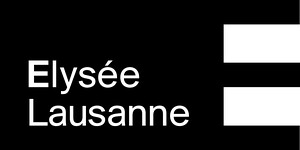May 25–August 28, 2016
Pl. de la Gare 17
1003 Lausanne
Switzerland
Hours: Tuesday–Sunday 11am–6pm
With the exhibition The Memory of the Future. Photographic Dialogues between Past, Present and Future, the Musée de l’Elysée encourages contemporary artists to take a close look at photography as a medium, innovates as it reveals a 3D digitization technology developed by a spin-off from Lausanne’s Swiss Federal Institute of Technology (EPFL), and displays its unique visual heritage.
The first exhibition curated by Director Tatyana Franck opens up a dialogue between the work of the pioneers of photographic techniques (the past), those of contemporary artists that breathe new life into these skills (the present), and avant-garde technologies that update these early processes (the future). Works from the museum’s collections, contemporary artists and new technologies come face to face and join forces to give a brand new vision of the history of photography.
Techniques over time…
Early photographic processes such as ambrotypes, daguerreotypes, ferrotypes, cyanotypes, etc. are displayed next to works by contemporary artists who breathe life into them. The exhibition includes a waxed paper negative by Gustave Le Gray in dialogue with those by Martin Becka, while cyanotypes by Anna Atkins and Paul Vionnet converse with those by Christian Marclay, Nancy Wilson-Pajic and John Dugdale. Jean-Gabriel Eynard’s daguerreotypes from the museum’s collections are exhibited next to portraits by Takashi Arai and Patrick Bailly-Maître-Grand and landscapes by Binh Danh and Jerry Spagnoli. Works of two scientists who won a Nobel Prize and invented a photographic technique also have pride of place—a self portrait by Gabriel Lippmann (Nobel Prize in Physics in 1908) who invented color photography using the interferential method and a portrait of Dennis Gabor (Nobel Prize in Physics in 1971), the inventor of the holographic process, a photographic technique in relief—echoing a holographic picture by James Turrell. Lastly, and as a point of convergence for all these photographic processes to fix an image on to a support, the camera obscura is presented through the works of Florio Puenter, Dino Simonett and Vera Lutter. Loris Gréaud—an artist invited to present an original installation capturing the spirit of the Musée de l’Elysée by recording its shadows and light—also explores this technique.
Homage and metamorphosis
The exhibition also presents the “mise en abyme” of iconic pictures from the history of photography reinterpreted by contemporary artists whose works examine the very notion of time or memory. The earliest photograph in history—by Nicéphore Niépce and dating back to 1826—is thus transformed by Joan Fontcuberta (Googlegramme Niépce, 2005) using PhotoMosaïque freeware connected online to the Google search engine, and by Andreas Müller-Pohle (Digital Scores VI). The first photographic self portrait in history—by Robert Cornelius in 1839—is reproduced on a series of mirrors by Oscar Muñoz in 2009 to examine the paradox of the aging of the photographic support, which is, however, supposed to record an image for eternity.
Innovating to preserve and showcase
A venue for exhibitions, conservation and now an experimentation, as part of the exhibition The Memory of the Future, the Musée de l’Elysée is proposing for the first time a space dedicated to the presentation of digitized virtual objects from its collections. This innovative project aims to introduce new collaborative and interactive experiences using the Museum’s collections to a wide range of audiences—whether they be photography enthusiasts, curators or researchers.
The public is invited to experimentally test the first 3D digitizations carried out in partnership with the start-up Artmyn, created at EPFL’s Audiovisual Communications Laboratory (LCAV). It will thus be possible to look at the works in 3D with unprecedented precision, but above all, to make the different textures of which they are composed appear on screen by lighting up the digital replicas from any angle.
Steeve Iuncker, Into the World
Presented simultaneously is an exhibition of Geneva photographer Steeve Iuncker entitled Into the World which sketches a subtle and intimate portrait of youth as it tries to find itself. 35 photographs that reveal the rites of passage from childhood to adulthood.
For several years, photographer Steeve Iuncker studied the passage from childhood to adulthood, examining the lack of clearly identified rites in our secular societies. His pictures capture the acts of teenagers as they affiliate themselves with reckless rites. Risk-taking, seeking oblivion as a form of death and rebirth, testing boundaries and transformative acts—the photographer weaves a subtle visual coming-of-age landscape, reminding us of our own private rituals.


